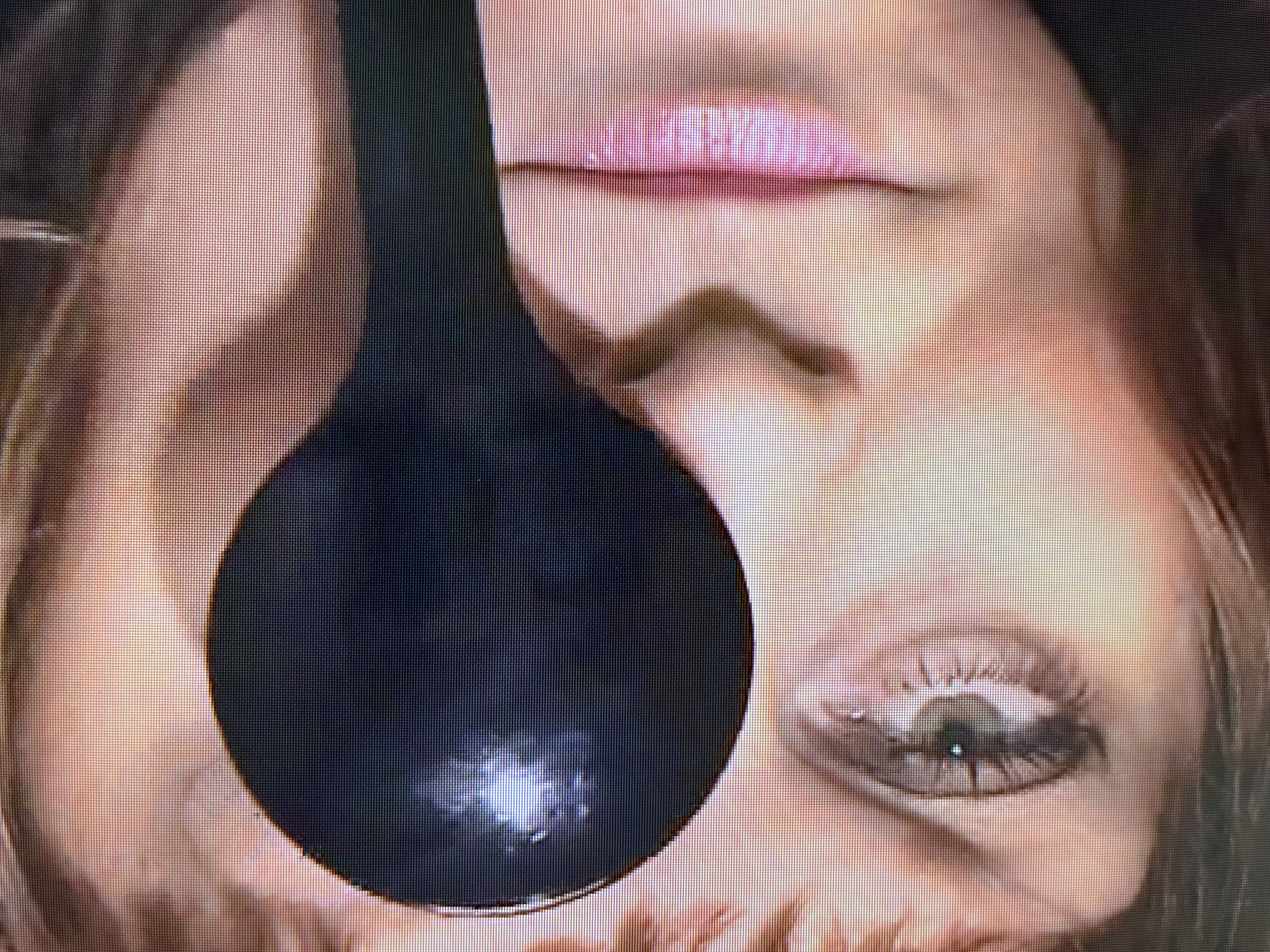( of )
Correct: 0
Incorrect: 0
A 40 year old woman reports that she has new diplopia. When she closes either eye, the second image disappears. Eye movements are full without nystagmus. The first examiner performs the cover-uncover test and finds no refixational movements in the uncovered eye. The second examiner also performs the cover-uncover test, but this time finds that there is an outward refixational movement of the uncovered eye.

Why was there a difference in the results of the two examinations?
Correct!
This is the most common technical error in using the cover test. If patients do not understand to bring the viewed target into focus, they will fail to execute a refixational
movement to place the viewed target onto the fovea. In that circumstance, ocular misalignment in any plane will be overlooked. The single Maddox rod test, which does not
depend on refixational eye movements, would reveal the ocular misalignment.
A little more information here. In evaluating diplopia, you must first make the distinction between “monocular” and “binocular” causes. Cover one eye at a time. If the diplopia persists with the covering of either eye, the diplopia is “monocular.” Monocular diplopia is usually caused by an optical issue—an uncorrected refractive error or an ocular media imperfection (usually keratopathy or cataract). If the diplopia disappears with the covering of both eyes—one at a time—the diplopia is “binocular.” Binocular diplopia is virtually always caused by ocular misalignment (the term “strabismus” is a synonym). For binocular diplopia, you must assess ocular ductions and versions, usually done by having the patient follow your finger or a light to determine whether excursions are intact. Then you must assess the pattern of ocular misalignment. You have two methods—objective (cover tests) and subjective (Maddox rod).
The cover tests are used to elicit ocular fixation movements. In the “cover-uncover test,” you must cover each eye—one at a time—and observe the fixational movement of the eye you are not covering. If the uncovered eye moves to pick up fixation, it was not previously fixating. If it consistently moves in the same direction with repeated cover-uncover gestures, you have discovered a TROPIA, a manifest misalignment. In the “alternate cover” (or “cross cover”) test, you will cover one eye and quickly move the occluder across the nasal bridge to cover the other eye. In doing so, you are interrupting fusion and aiming to elicit a PHORIA, a latent ocular misalignment. Because the cover tests depend on eliciting ocular fixation movements, they will fail if the patient: 1) does not know to fixate (“make the target clear”); 2) cannot fixate because of poor vision, ocular motor paresis or restriction; 3) is not cooperating; or 4) has a small misalignment or ocular oscillations, so that fixational movements are hard to detect.
The Maddox rod tests do not depend on fixational movements, but they do depend on the patient’s telling you the relative position of the stimuli seen with each eye. That task may seem simple to you, but some patients fail at it because they cannot see well enough or because they do not understand what you are asking them to report.
Of course, either test will fail if technique is flawed. So learn how to perform them and what the pitfalls are. Practice helps!
A little more information here. In evaluating diplopia, you must first make the distinction between “monocular” and “binocular” causes. Cover one eye at a time. If the diplopia persists with the covering of either eye, the diplopia is “monocular.” Monocular diplopia is usually caused by an optical issue—an uncorrected refractive error or an ocular media imperfection (usually keratopathy or cataract). If the diplopia disappears with the covering of both eyes—one at a time—the diplopia is “binocular.” Binocular diplopia is virtually always caused by ocular misalignment (the term “strabismus” is a synonym). For binocular diplopia, you must assess ocular ductions and versions, usually done by having the patient follow your finger or a light to determine whether excursions are intact. Then you must assess the pattern of ocular misalignment. You have two methods—objective (cover tests) and subjective (Maddox rod).
The cover tests are used to elicit ocular fixation movements. In the “cover-uncover test,” you must cover each eye—one at a time—and observe the fixational movement of the eye you are not covering. If the uncovered eye moves to pick up fixation, it was not previously fixating. If it consistently moves in the same direction with repeated cover-uncover gestures, you have discovered a TROPIA, a manifest misalignment. In the “alternate cover” (or “cross cover”) test, you will cover one eye and quickly move the occluder across the nasal bridge to cover the other eye. In doing so, you are interrupting fusion and aiming to elicit a PHORIA, a latent ocular misalignment. Because the cover tests depend on eliciting ocular fixation movements, they will fail if the patient: 1) does not know to fixate (“make the target clear”); 2) cannot fixate because of poor vision, ocular motor paresis or restriction; 3) is not cooperating; or 4) has a small misalignment or ocular oscillations, so that fixational movements are hard to detect.
The Maddox rod tests do not depend on fixational movements, but they do depend on the patient’s telling you the relative position of the stimuli seen with each eye. That task may seem simple to you, but some patients fail at it because they cannot see well enough or because they do not understand what you are asking them to report.
Of course, either test will fail if technique is flawed. So learn how to perform them and what the pitfalls are. Practice helps!